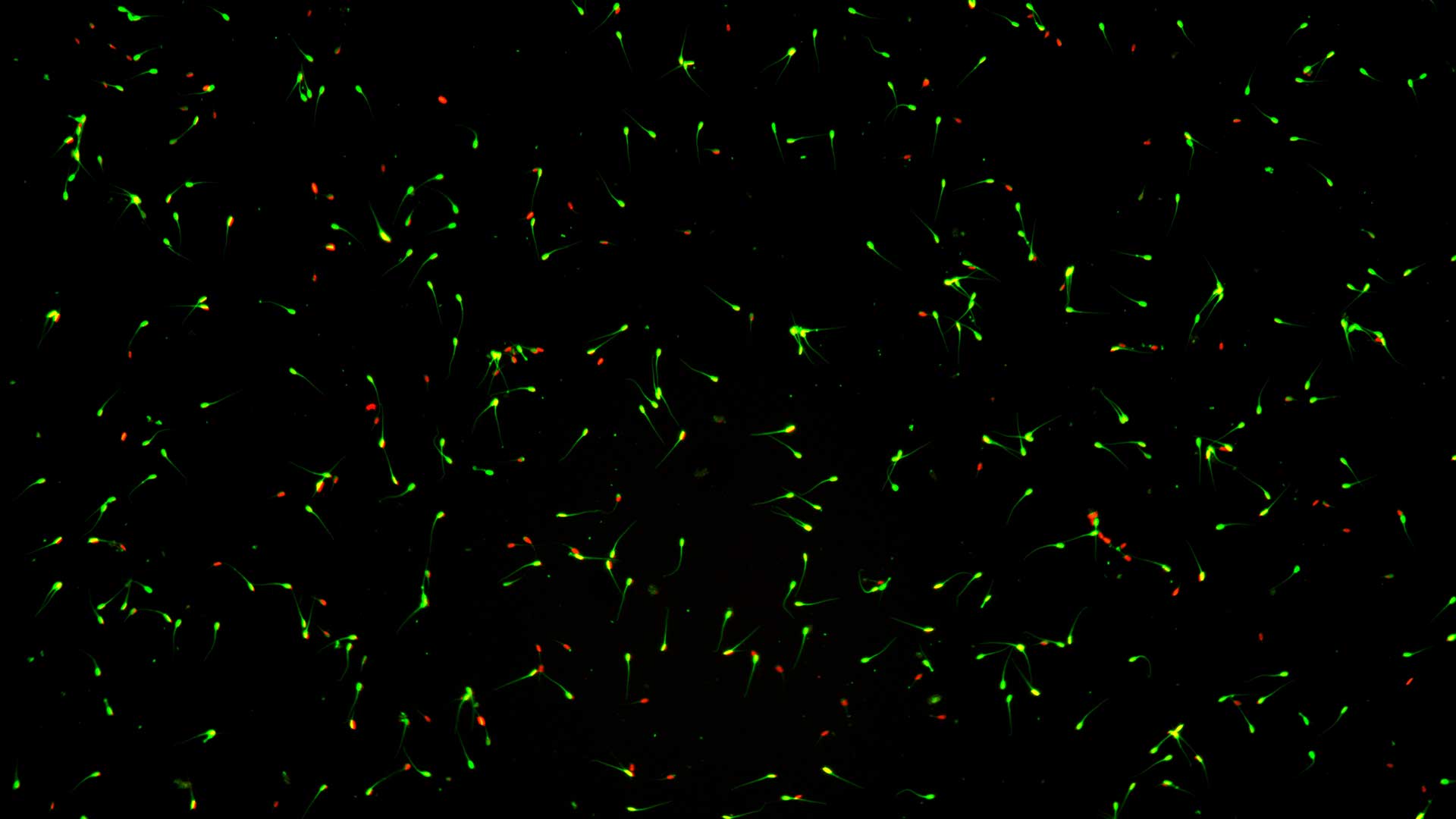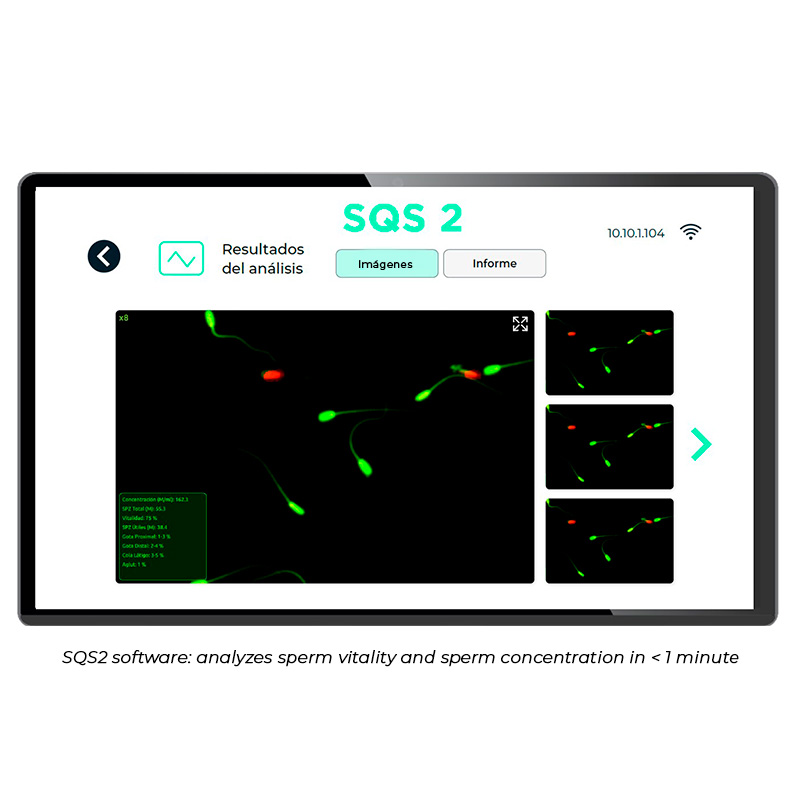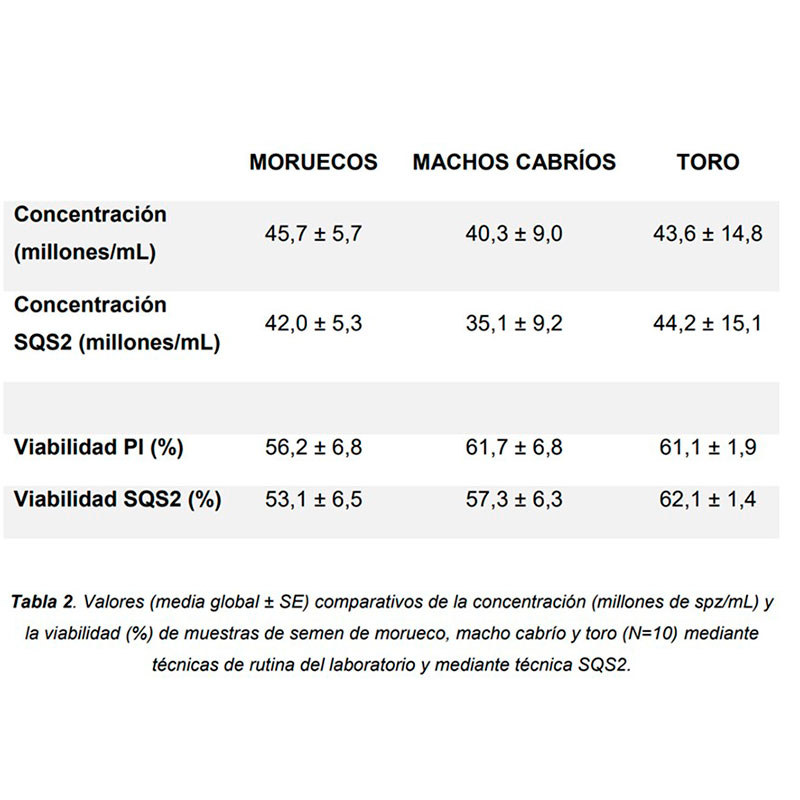- Sectors
- Aerospace & Defense
- Big science
- Biotechnology
- Fintech
- Insights

Optimization of the animal reproduction process is an indispensable requirement to improve the profitability of livestock farms and insemination centers. In this line, the use of technologies such as automation, robotics or artificial intelligence have emerged as fundamental to carry out a transformation that pursues two objectives: to increase the reliability of the results and to achieve a more efficient and, therefore, faster analysis.
Working with current seminal analysis systems, from Bürker chambers to microscopes or cell counters, are complex, time-consuming processes that do not offer 100% efficiency. The main problem lies in the subjectivity of the results obtained, as they can vary depending on the training and knowledge of the person performing the analysis. As a general rule, in animal selection and experimentation centers, it is common to work simultaneously with high quantities of doses and sperm samples.
The great challenge is to develop a solution that allows the analysis to be performed 100% automatically, offering the possibility of having fully integrated concentration calculations within a software and, at the same time, minimizing human error. In this way, the semen analysis process could be faster and more accurate.
The SQS2 automatic analysis system, based on fluorescence microscopy, was initially developed for the evaluation of porcine semen. However, given its ease of use and the accuracy of the results in swine, ARQUIMEA researchers hypothesized that the equipment could evaluate the functional characteristics of different ruminant species with minimal software adjustments. Starting, however, from species that present similarities in the shape and dimensions of the spermatic head with respect to the boar.
In order to evaluate the effectiveness of SQS2 in the evaluation of sperm concentration and viability, ARQUIMEA researchers carried out a study in collaboration with the Department of Animal Reproduction of the INIA-CSIC in which they took spermatozoa, goats and bulls for the study.
The experimental work was carried out during the months of May to June 2022 and the process consisted of comparing the results provided by the SQS2 equipment with those obtained in the laboratory using traditional routine techniques. For this purpose, ten different samples were evaluated for each species (10 replicates of each) and compared both methods by means of a statistical analysis.

The results they obtained after the experimental work showed that, when samples were analyzed on the SQS2 equipment, it provided concentration and viability values similar to routine techniques, but in a faster and easier way. The seminal analysis system detected the cells and was able to record and take focused, good quality pictures.
Finally, the researchers compared the values obtained using the routine laboratory techniques and those obtained on the SQS2 equipment, and observed no statistically significant differences between the overall means of concentration and viability obtained using both methods, for any of the three species tested. Therefore, it was determined that the SQS2 kit was suitable for the evaluation of ruminant sperm samples.
Ultimately, the simplicity observed in the analysis process allowed for rapid decision making in terms of processing and number of seminal doses per ejaculate. In addition, the analysis was less laborious and faster compared to the routine techniques used in the laboratory.
